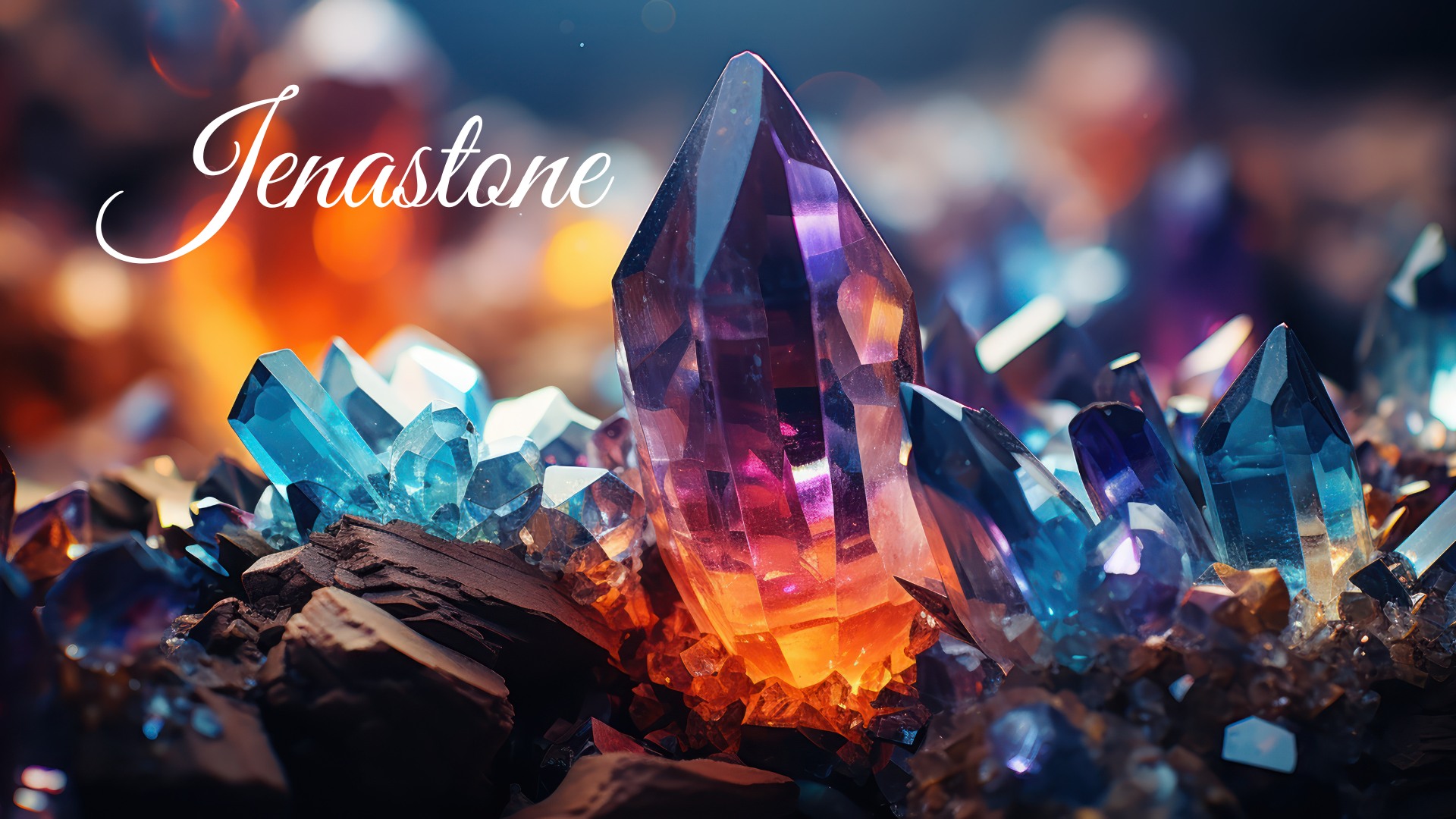Step into a world where elegance meets durability, where timeless beauty blends seamlessly with modern innovation. Welcome to the enchanting realm of Jenastone – a captivating stone that has stood the test of time and continues to mesmerize us with its resplendent appeal. With its rich history, unique characteristics, and endless possibilities in home design and decor, Jenastone is truly a gem worth exploring.
Whether you’re an interior design enthusiast seeking inspiration or a homeowner looking for the perfect material to elevate your space, join us on this journey as we unravel the secrets behind Jenastone’s enduring allure. From its origins rooted in ancient civilizations to its versatile applications in contemporary settings, let’s delve deep into what makes Jenastone a standout choice for discerning individuals around the globe.
The History and Origins of Jenastone
Jenastone, with its timeless beauty and unparalleled durability, has captivated homeowners and designers for generations. But where did this remarkable material come from? Let’s embark on a journey into the history and origins of Jenastone to uncover its fascinating story. The roots of Jenastone can be traced back many centuries ago, when ancient civilizations discovered the power of combining natural elements to create something extraordinary. The exact origins are shrouded in mystery, but it is believed that early craftsmen stumbled upon the unique combination of minerals and rock formations that give Jenastone its distinctive qualities.
Throughout history, Jenastone has been celebrated for its strength and resilience. From Egyptian pyramids to Roman cathedrals, this versatile material has stood the test of time in some of humanity’s most iconic structures. Its ability to withstand extreme weather conditions and resist wear makes it an ideal choice for both interior and exterior applications. Over the years, advancements in technology have allowed for even greater innovation with Jenastone. Modern engineering techniques have enhanced its durability while maintaining its inherent beauty. Today, it continues to be a sought-after material in contemporary architecture and design projects around the world.
The rich history behind Jenastone adds depth to its appeal as a building material. It carries with it a sense of heritage and tradition that resonates with those who appreciate craftsmanship and timeless design. Whether used as flooring, countertops or wall cladding, each piece tells a story steeped in centuries-old wisdom. As we delve further into what makes Jenastone truly special – its unique characteristics– we begin to understand why it continues to stand out among other materials in home design and decor alike.
The Unique Characteristics and Properties of Jenastone
Jenastone is truly a remarkable material, known for its unique characteristics and properties that set it apart from other natural stones. One of the most notable features of Jenastone is its incredible durability. It can withstand heavy foot traffic, making it an excellent choice for high-traffic areas like kitchens and entryways. In addition to its durability, Jenastone also boasts exceptional resistance to scratches and stains. This makes it an ideal option for countertops where spills are bound to happen. With minimal maintenance, your Jenastone surfaces will continue to look pristine year after year.
Another standout quality of Jenastone is its wide range of colors and patterns. From classic neutrals like white and gray to bold statement hues like blue or red, there’s a shade to suit every design aesthetic. The intricate veining patterns found in some varieties mimic the beauty of natural marble, adding elegance and sophistication to any space. Furthermore, Jenastone exhibits excellent heat resistance, making it suitable for use in fireplaces or outdoor kitchen countertops where hot pans or grills may come into contact with the surface. Not only does this stone possess practical attributes but it also has a luxurious feel when touched due to its smooth texture. Whether you’re running your hands along a polished countertop or stepping onto a sleek floor made from Jenastone tiles – you’ll instantly be captivated by the tactile experience.
These unique characteristics make Jenastone an outstanding choice for both residential and commercial applications alike. Its combination of durability, stain resistance, versatile aesthetics, and luxurious touch sets it apart as one-of-a-kind material that stands the test of time.
The Versatility of Jenastone in Home Design and Decor
Jenastone is not just a beautiful material for home design and decor, it’s also incredibly versatile. Whether you’re looking to create a sleek and modern space or a cozy rustic retreat, Jenastone can be the perfect choice. One of the most remarkable aspects of Jenastone is its ability to mimic natural stone. With its wide range of colors and textures, it can easily replicate the look of marble, granite, or even limestone. This makes it an excellent option for those who desire the elegance and sophistication of natural stone but without the high price tag.
In addition to its ability to imitate other materials, Jenastone can also be customized to fit any design aesthetic. It can be cut into various shapes and sizes, allowing for endless possibilities in terms of patterns and layouts. Whether you prefer clean lines and minimalist designs or intricate mosaics with rich detailing, Jenastone can bring your vision to life.
Not only does Jenastone excel in interior applications such as countertops and flooring, but it’s also suitable for outdoor spaces like patios or pool surrounds. Its durability and resistance to moisture make it an ideal choice for areas that are exposed to the elements.
Furthermore, Jenastone’s versatility extends beyond its appearance. It is heat-resistant, stain-resistant, and scratch-resistant – making it highly practical for busy households with children or pets. With minimal maintenance required compared to other materials like natural stone or wood surfaces – cleaning becomes hassle-free!
Popular Uses for Jenastone in Interior and Exterior Spaces
When it comes to home design and decor, the versatility of Jenastone knows no bounds. This stunning material can be used in a variety of ways, both indoors and outdoors. To create beautiful and functional spaces that are sure to impress.
In interior spaces, Jenastone can be found adorning countertops, backsplashes, and even flooring. Its natural beauty and durability make it an ideal choice for these high-traffic areas. Imagine preparing meals on a sleek Jenastone countertop or stepping onto cool and luxurious Jenastone tiles – pure bliss! But let’s not forget about the exterior spaces! From outdoor kitchens to patio accents, Jenastone adds an elegant touch to any outdoor area. Create a striking focal point with a statement fireplace surround or elevate your poolside oasis with stylish Jenastone pavers.
The possibilities are truly endless with this remarkable material. With its wide range of colors and patterns available, you can customize your space to suit your personal style perfectly. Whether you prefer a modern minimalist look or something more traditional, there is a type of Jenastone that will complement your vision flawlessly.
Not only does Jenastone offer aesthetic appeal but also practical benefits too. It is resistant to scratches, stains, heat damage, making it incredibly easy to maintain over time. Say goodbye to constant sealing or re-polishing – once installed correctly by professionals who understand its unique properties – it will stand the test of time beautifully.
Caring for and Maintaining Jenastone
Caring for and maintaining Jenastone is essential to ensure its longevity and keep it looking beautiful in your home. The good news is that taking care of this versatile material is relatively easy. Regular cleaning is key to keeping Jenastone in pristine condition. Simply use a mild detergent or stone-specific cleaner mixed with warm water and a soft cloth or sponge to wipe down the surface. Avoid abrasive cleaners or scouring pads as they can damage the stone’s finish.
In addition to regular cleaning, it’s important to protect Jenastone from potential stains. Sealing the surface regularly helps prevent liquids from seeping into the stone and causing discoloration. Follow the manufacturer’s instructions on when and how often to apply a sealant.
When it comes to maintenance, be mindful of avoiding sharp objects that could scratch or chip the surface of Jenastone. Use cutting boards when preparing food, and avoid dragging heavy objects across countertops or floors made of this material. If you notice any cracks, chips, or deep stains on your Jenastone surfaces, it’s best to contact a professional for repairs rather than attempting DIY fixes that could potentially cause further damage.
The Future of Jenastone: Advancements and Innovations
As technology continues to advance at a rapid pace, so too does the world of interior design and home decor. And in this evolving landscape, Jenastone is poised to make even greater strides in the future. With its timeless appeal and unique characteristics. It’s no wonder that experts are predicting exciting advancements and innovations for this versatile material.
One area where we can expect to see significant progress is in the development of new colors and finishes for Jenastone. The current range already offers an array of stunning options, but imagine being able to choose from even more vibrant hues or innovative textures! This means that homeowners will have even more opportunities to personalize their spaces and create truly one-of-a-kind designs.
Another aspect that holds great promise for the future is the continued refinement of manufacturing processes. As techniques improve, we can anticipate enhancements in durability and strength without sacrificing any of Jenastone’s natural beauty. This means that homeowners will be able to enjoy their countertops. Flooring, or other installations with confidence, knowing they are built to last. In addition to these advancements in color selection and manufacturing processes. There may also be breakthroughs when it comes to sustainability.
With environmental concerns becoming increasingly important in our society, manufacturers may explore ways to reduce waste during production or develop eco-friendly alternatives using recycled materials without compromising on quality or aesthetics. Furthermore, as smart home technologies become more prevalent. It wouldn’t be surprising if we see integration between Jenastone surfaces and these systems. Imagine having countertops or tables equipped with wireless charging capabilities or embedded sensors that can detect spills or changes in temperature!
With all these potential advancements on the horizon for Jenastone, it’s clear that this material has a bright future ahead. Its timeless appeal combined with technology innovation guarantees its continued relevance in homes around the world.
Final Thoughts on the Timeless Appeal of Jenastone
As we’ve explored the history, characteristics, and versatility of Jenastone. It’s clear that this natural stone has a timeless appeal that transcends trends. From its origins in ancient civilizations to its modern-day uses in home design and decor. Jenastone continues to captivate with its beauty and durability.
The unique properties of Jenastone make it a popular choice for both interior and exterior spaces. Its strength and resistance to staining make it an ideal material for countertops, flooring, and backsplashes in kitchens and bathrooms. Its natural variations in color and texture add depth and visual interest to any space.
In addition to its practical applications, Jenastone also brings a touch of elegance when used as accents or focal. Points in architectural features such as fireplace surrounds or wall cladding. The versatility of this stone allows designers to create stunning designs that seamlessly blend with various styles – from traditional to contemporary.
Caring for Jenastone is relatively simple but essential for maintaining its beauty over time. Regular cleaning using mild soap or stone-specific cleaners recommended by professionals will help preserve. Its luster while avoiding harsh chemicals that could damage the surface.
Additionally, sealing the stone periodically can provide an extra layer of protection against stains. Looking ahead, advancements in technology continue to push the boundaries of what is possible with Jenastone. Innovations such as enhanced sealants or coatings may offer even greater durability without compromising on aesthetics. These developments ensure that future generations can enjoy the timeless appeal of this remarkable natural stone.




